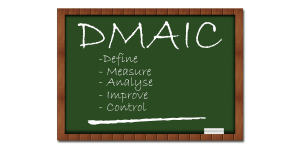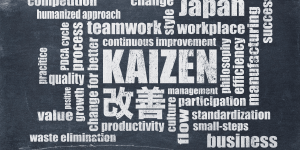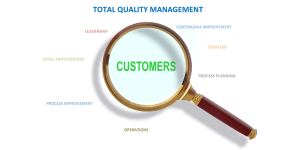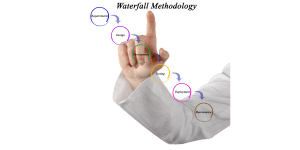Project management is a crucial aspect of any organization. It involves planning, organizing, coordinating, and controlling resources to achieve specific goals. However, different projects require different methodologies based on their scope, complexity, and objectives. In this post, we will explore five project management methodologies that can help you and your team boost performance and productivity.
Are you struggling to manage your team’s projects effectively? Do you find it challenging to balance resources and timelines while ensuring quality deliverables? If so, you’re not alone. Many organizations face similar challenges, but the good news is that there are proven methodologies that can help.
Think of project management methodologies as roadmaps. Just as you wouldn’t embark on a road trip without a map or GPS, you shouldn’t start a project without a plan. The right methodology can help you navigate the project landscape, avoid obstacles, and reach your destination on time and within budget.
So, which methodology is right for your project? That depends on various factors such as the project’s size, complexity, and requirements. In the next section, we’ll explore five popular project management methodologies and their benefits.
- Definition of Management Methodologies
- 1-Agile Management Methodology
- What is Agile Methodology and What are its Principles?
- 2-Waterfall Management Methodology
- Waterfall: Definition and Principles
- 3-Lean Management Methodology
- Definition and Principles of Lean
- 4-Six Sigma Management Methodology
- Definition and Principles of Six Sigma
- 5-Total Quality Management Methodology
- Definition and Principles of Total Quality Management
- Conclusion: Choosing the Right Project Management Methodology
Definition of Management Methodologies
Management methodologies refer to a set of structured approaches used to guide the process of managing projects. These approaches provide a framework for managing a project from start to finish and ensure that everyone involved in the project understands what is expected of them. The aim of management methodologies is to increase efficiency, reduce costs, and improve project outcomes.
There are different types of management methodologies, including Agile, Waterfall, Scrum, Lean, and Six Sigma, among others. Each of these methodologies has its own unique approach to managing projects, and they are all effective in different scenarios.
Agile methodology is a flexible and adaptive approach to project management that focuses on delivering value to the customer through continuous improvement. Waterfall methodology, on the other hand, is a more structured approach that follows a linear, sequential process.
Scrum methodology is a subset of Agile methodology that emphasizes teamwork, collaboration, and iterative progress. Lean methodology is a customer-focused approach that seeks to eliminate waste and improve efficiency. Six Sigma methodology, on the other hand, is a data-driven approach that seeks to minimize defects and improve quality.
In conclusion, management methodologies are essential for achieving success in project management. By using a structured approach, project managers can ensure that their projects are completed on time, within budget, and to the satisfaction of stakeholders. Understanding the different types of management methodologies and their respective strengths and weaknesses is critical for selecting the right approach for each project.
1-Agile Management Methodology
Agile management methodology is a popular approach used in project management. It emphasizes the importance of flexibility and collaboration between team members. The agile methodology focuses on iterative and incremental development, meaning that projects are broken down into smaller chunks that can be completed in a shorter time frame.

One of the key benefits of using agile methodology is the ability to respond quickly to changes. Because projects are broken down into smaller pieces, teams can adjust their approach as needed to ensure that they are meeting the needs of their customers. This can lead to a faster pace of development and a greater level of customer satisfaction.
Another benefit of agile methodology is that it fosters collaboration between team members. This approach encourages regular communication and feedback, which can help teams identify potential issues early on and make adjustments as needed. In addition, the agile methodology promotes transparency and accountability, which can help to build trust between team members and stakeholders.
To implement agile methodology successfully, it is important to have a clear understanding of the project goals and objectives. This can help teams to prioritize tasks and ensure that they are working on the most important items first. In addition, it is important to have a strong project manager who can provide guidance and support to the team.
Overall, the agile methodology can be a powerful tool for project management, particularly in environments where change is a constant. By fostering collaboration, promoting flexibility, and providing a clear framework for development, agile methodology can help teams to work more efficiently and effectively
What is Agile Methodology and What are its Principles?
Agile methodology is a project management approach that emphasizes flexibility, collaboration, and customer satisfaction. Unlike traditional project management methods, which rely on strict planning and control, agile methodology prioritizes adaptability and responsiveness to change.
At its core, agile methodology is based on four main principles. The first principle is individuals and interactions over processes and tools. This means that agile teams prioritize effective communication and collaboration between team members, rather than relying solely on tools and processes to manage projects.
The second principle is working software over comprehensive documentation. In other words, agile teams prioritize delivering functional software that meets customer needs, rather than spending excessive time on documentation and planning.
The third principle is customer collaboration over contract negotiation. Agile teams prioritize working closely with customers throughout the project to ensure that their needs are met and that the final product meets their expectations.
Finally, the fourth principle is responding to change over following a plan. Agile teams prioritize flexibility and adaptability, and are willing to make changes to the project as needed to ensure that it delivers the most value to customers.
By focusing on these principles, agile teams are able to deliver high-quality software quickly and efficiently, while also ensuring that customer needs are met and that the project is able to adapt to changing circumstances.
2-Waterfall Management Methodology
The Waterfall methodology is a linear project management approach that is best suited for projects with clearly defined goals and deliverables. It is a structured approach that involves a sequence of phases that must be completed before moving on to the next phase. The phases include requirements gathering, design, implementation, testing, deployment, and maintenance.
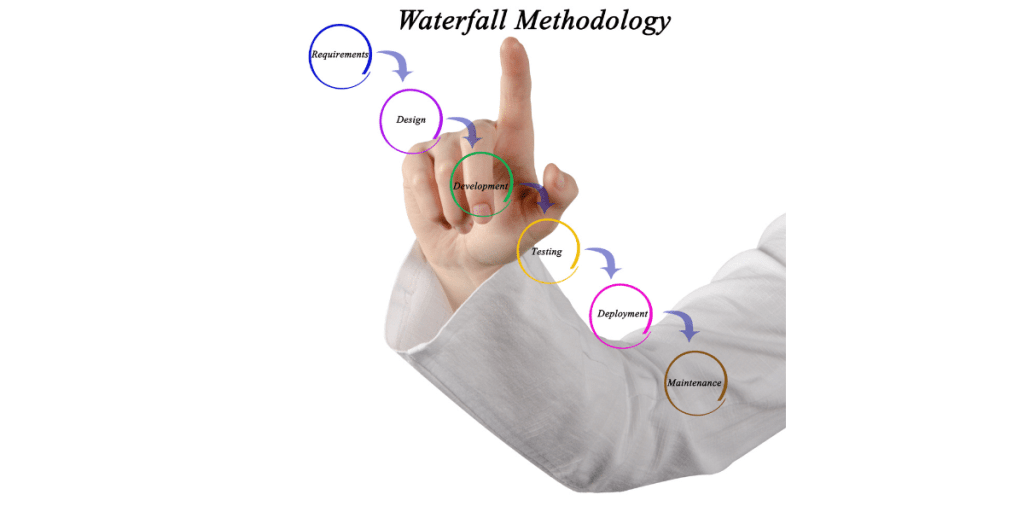
Using the Waterfall methodology, each phase must be completed before moving on to the next phase. This means that the project team must have a clear understanding of the requirements before they start designing the solution. This reduces the risk of errors and changes in the later stages of the project.
The Waterfall methodology is like building a house. You start by laying the foundation, then you build the walls, roof, and so on. Each step must be completed before you move on to the next step. It is a very structured approach that works well for projects that have a clear scope and requirements.
However, the Waterfall methodology has some drawbacks. Since each phase must be completed before moving on to the next phase, it can be difficult to make changes once the project is underway. This can lead to delays and increased costs if changes are required.
In conclusion, the Waterfall methodology can be an effective project management approach for projects with well-defined requirements and goals. It provides structure and helps to reduce the risk of errors and changes. However, it may not be suitable for projects that require flexibility and the ability to make changes on the fly.
Waterfall: Definition and Principles
Waterfall is a traditional project management methodology that follows a linear, sequential approach. It is a popular approach for projects that involve well-understood requirements and predictable outcomes. The Waterfall methodology is characterized by a set of principles that dictate how a project should be planned, executed, and delivered.
The first principle of Waterfall is that the project is divided into distinct phases, each of which is completed before the next begins. These phases include requirements gathering, design, development, testing, deployment, and maintenance. The second principle is that each phase has a defined set of deliverables that must be completed before moving on to the next phase.
The third principle of Waterfall is that the project plan is comprehensive and detailed. The plan outlines all of the tasks, timelines, and resources required to complete the project. The fourth principle is that the project plan is fixed, meaning that changes are not permitted once the plan has been approved.
The fifth principle of Waterfall is that there is a clear hierarchy of authority and responsibility. The project manager is responsible for overseeing the project and ensuring that it stays on track. The team members are responsible for completing the tasks assigned to them.
One of the benefits of the Waterfall methodology is that it provides a clear structure for the project. Team members know what is expected of them and when it is expected. However, it can also be inflexible, making it challenging to adapt to changes in requirements or unforeseen issues.
In conclusion, the Waterfall methodology is a linear, sequential approach to project management that emphasizes a comprehensive plan, distinct phases with defined deliverables, and a clear hierarchy of authority and responsibility. While it provides a clear structure for the project, it can be inflexible, making it challenging to adapt to changes.
3-Lean Management Methodology
Lean management methodology is a project management approach that focuses on minimizing waste and increasing efficiency in all areas of a project. It originated in the manufacturing industry but has since been adapted to other sectors, including software development and healthcare.

One of the key principles of lean management is continuous improvement. This means that the team is constantly looking for ways to improve processes, reduce waste, and increase efficiency. By doing so, they can deliver a higher quality product or service, with fewer resources and in less time.
Another important aspect of lean management is value stream mapping. This involves mapping out the entire process, from start to finish, and identifying areas where waste can be eliminated. This could include anything from unnecessary paperwork to inefficient communication channels.
One common tool used in lean management is the Kanban board. This is a visual way of tracking tasks and progress, allowing the team to quickly see what needs to be done, who is responsible for it, and where it is in the process. This helps to reduce confusion and ensure that everyone is on the same page.
Overall, lean management methodology can help teams to work more efficiently, reduce waste, and deliver a higher quality product or service. By focusing on continuous improvement and value stream mapping, teams can identify and eliminate inefficiencies, resulting in better outcomes for everyone involved.
Definition and Principles of Lean
Lean is a project management methodology that focuses on maximizing value while minimizing waste. It originated from the Toyota Production System (TPS) and has since been adopted by various industries worldwide. The core principle of Lean is to continuously improve processes by eliminating unnecessary steps and optimizing resources.
One of the main principles of Lean is to identify and eliminate any non-value-adding activities or “waste” in a process. This includes overproduction, waiting, defects, over-processing, excess inventory, unnecessary motion, and unused employee creativity. By eliminating these wastes, a company can optimize its processes and improve its overall efficiency.
Another key principle of Lean is to focus on value creation for the customer. This means understanding the customer’s needs and delivering products or services that meet or exceed their expectations. By focusing on the customer, a company can improve its reputation and gain a competitive advantage in the market.
Lean also emphasizes the importance of continuous improvement. This involves constantly looking for ways to optimize processes, reduce waste, and improve quality. By implementing a continuous improvement mindset, a company can stay ahead of the competition and adapt to changing market conditions.
In summary, Lean is a project management methodology that focuses on maximizing value while minimizing waste. Its core principles include identifying and eliminating waste, focusing on value creation for the customer, and implementing a continuous improvement mindset. By adopting Lean principles, a company can optimize its processes, improve its efficiency, and gain a competitive advantage.
4-Six Sigma Management Methodology
Six Sigma is a powerful methodology for improving business performance by reducing variability and eliminating defects in processes. It is a data-driven approach to process improvement that focuses on identifying and removing the causes of defects and minimizing variability in manufacturing and business processes.
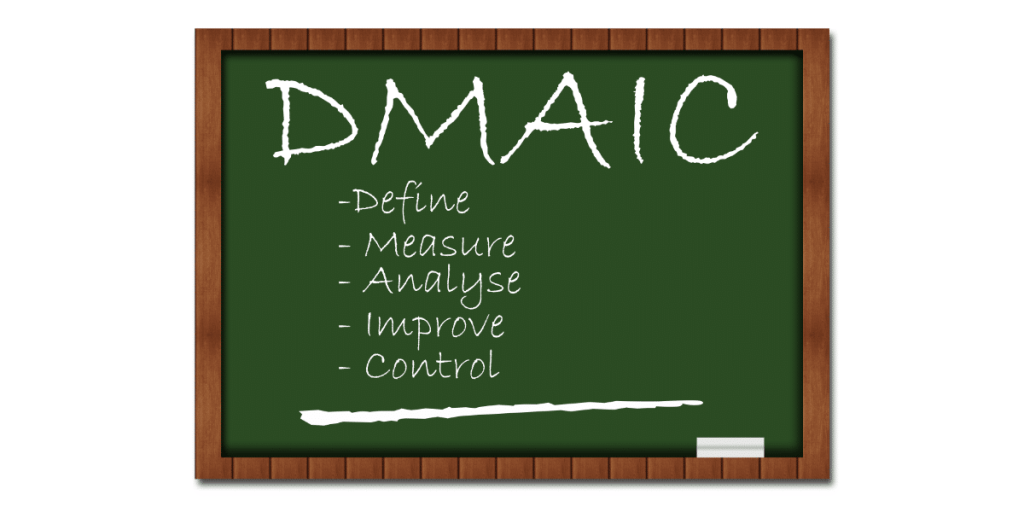
At its core, Six Sigma is a management philosophy that emphasizes the importance of customer satisfaction, process improvement, and the use of data and statistical analysis to drive decision-making. It is a disciplined, structured approach that can be applied to any process, from manufacturing to service industries.
One of the key principles of V. Six Sigma is that all processes have variation, and that reducing this variation is critical to improving quality and reducing defects. By measuring and analyzing the causes of this variation, organizations can identify opportunities for improvement and implement changes that will result in better performance.
Another important aspect of V. Six Sigma is its focus on teamwork and collaboration. To be successful, V. Six Sigma projects require the input and involvement of all stakeholders, from senior management to front-line employees. This collaborative approach helps to ensure that all perspectives are considered, and that the best solutions are identified and implemented.
Overall, Six Sigma is a powerful methodology that can help organizations improve their performance, reduce defects, and delight customers. By embracing the principles of V. Six Sigma and applying them to their processes, organizations can achieve significant improvements in quality, efficiency, and profitability.
Definition and Principles of Six Sigma
Six Sigma is a data-driven methodology that aims to improve business processes by identifying and removing the causes of defects and minimizing variability. It was originally developed by Motorola in the 1980s and has since been used by many organizations to improve their quality and efficiency.
The core principle of Six Sigma is to reduce variation and defects in processes. This is achieved using statistical tools and techniques, such as statistical process control and hypothesis testing. Six Sigma also emphasizes the importance of customer focus and continuous improvement.
To implement Six Sigma successfully, organizations need to follow a structured approach. This involves defining the problem, measuring the current process performance, analyzing the data, improving the process, and controlling the results.
One of the key benefits of Six Sigma is that it can lead to significant cost savings and increased customer satisfaction. By reducing defects and variability, organizations can improve their product or service quality, which in turn can lead to increased customer loyalty and higher profits.
In summary, Six Sigma is a powerful methodology that can help organizations to improve their quality and efficiency by reducing defects and variability in their processes. By following a structured approach and focusing on customer needs, organizations can achieve significant benefits and gain a competitive advantage in their industry.
5-Total Quality Management Methodology
Total Quality Management (TQM) is a project management methodology that aims to improve the quality of a product or service by involving every member of the organization in the process. TQM involves a continuous improvement cycle that focuses on customer satisfaction, employee involvement, and process improvement.
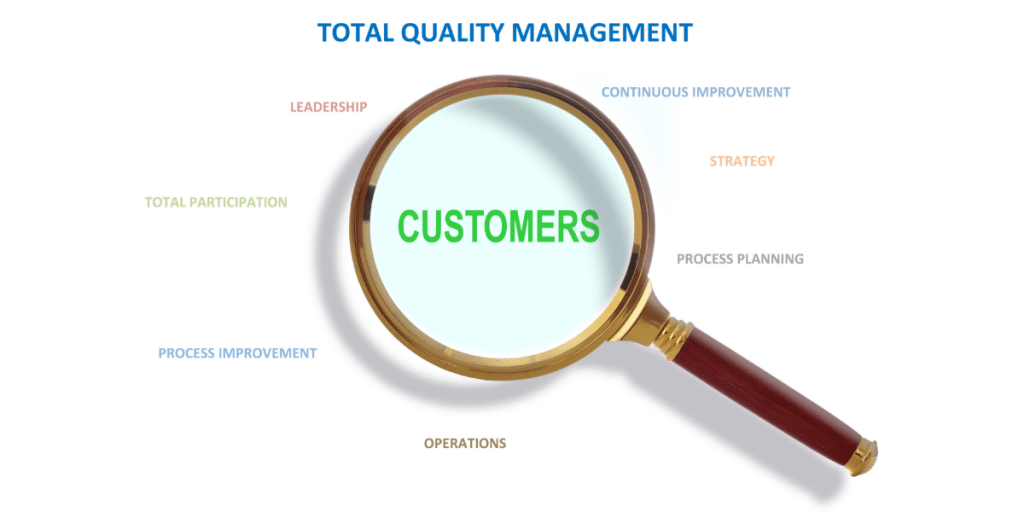
TQM is based on the idea that quality is everyone’s responsibility, not just the quality control department. By involving every employee in the process, TQM can identify and eliminate inefficiencies, reduce waste, and improve customer satisfaction.
One of the key components of TQM is the Plan-Do-Check-Act (PDCA) cycle. This cycle involves four stages: planning, implementing, monitoring, and adjusting. The PDCA cycle helps ensure that the process is continuously improving and that the end product meets or exceeds customer expectations.
To implement TQM, an organization must have a culture of continuous improvement. This means that everyone in the organization must be committed to the process and willing to make changes to improve the product or service. TQM also requires strong leadership and effective communication to ensure that everyone is working towards the same goal.
In conclusion, TQM is a powerful methodology for improving the quality of a product or service. By involving every member of the organization in the process, TQM can identify and eliminate inefficiencies, reduce waste, and improve customer satisfaction. If your organization is committed to a culture of continuous improvement, TQM may be the perfect methodology for your next project.
Definition and Principles of Total Quality Management
Total Quality Management (TQM) is a management approach that emphasizes the importance of focusing on customer needs and expectations, continuous improvement, and teamwork. It is a comprehensive and structured approach that involves all employees in an organization to improve the quality of products, services, and processes.
TQM is based on several principles. The first principle is customer focus, which requires an organization to understand and meet the needs and expectations of its customers. The second principle is continuous improvement, which involves constantly improving the quality of products, services, and processes using statistical tools, quality circles, and employee involvement.
The third principle is teamwork, which involves all employees in an organization working together to achieve common goals. The fourth principle is leadership, which requires effective management to provide the necessary resources and support for the implementation of TQM. The fifth principle is training and education, which involves providing employees with the necessary knowledge and skills to implement TQM.
TQM is a powerful management approach that can improve the performance of an organization in many ways. By focusing on customer needs and expectations, TQM can help organizations to increase customer satisfaction and loyalty. By continuously improving the quality of products, services, and processes, TQM can help organizations to reduce costs, increase efficiency, and improve competitiveness.
In conclusion, Total Quality Management is a comprehensive and structured management approach that involves all employees in an organization to improve the quality of products, services, and processes. Its principles of customer focus, continuous improvement, teamwork, leadership, and training and education can help organizations to achieve better customer satisfaction, reduce costs, increase efficiency, and improve competitiveness.
Conclusion: Choosing the Right Project Management Methodology
In conclusion, choosing the right project management methodology is crucial in boosting your team’s performance. Each methodology has its strengths and weaknesses, and it’s essential to consider your project’s unique needs before making a decision.
The Waterfall methodology is best suited for projects with clearly defined goals that won’t change throughout the project’s lifecycle. Agile is ideal for projects that require flexibility and adaptability, while Lean Six Sigma is best for projects with a focus on continuous improvement.
Choosing the right methodology for your project can make all the difference in achieving success. By considering factors such as project scope, budget, timeline, and team dynamics, you can select the methodology that will work best for your team and help you achieve your project goals efficiently.
Remember, selecting the right methodology is only the first step. It’s equally essential to communicate and collaborate with your team throughout the project’s lifecycle to ensure everyone is on the same page and working towards the same goals.


